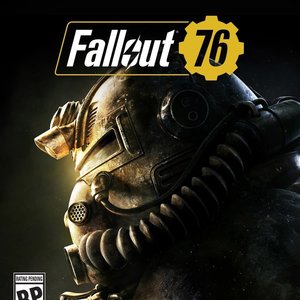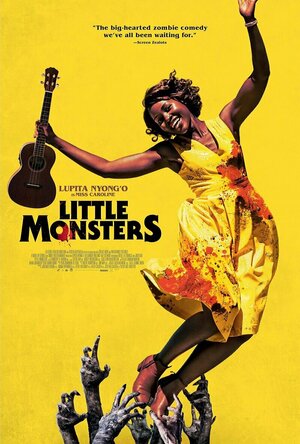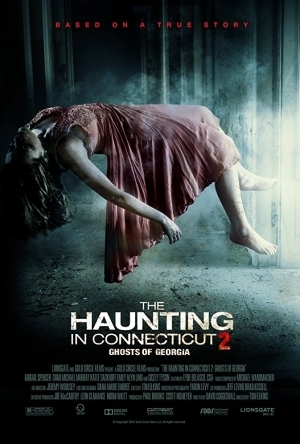Amberley Yvonne Mackenzie (9 KP) rated the PlayStation 4 version of Fallout 76 in Video Games
Nov 27, 2018
This instalment of the Fallout series sees us catapulted to West Virginia, an area never previously visited in the post nuclear armageddon indicative of the franchise. You begin as a lowly vault dweller and learn that Vault 76 is a control vault designed to open 25 years after the bombs have dropped and obliterated civilisation as we know it. the character creation is straight forward and the same in design as Fallout 4, infact, the whole game is the exact same as Fallout 4 with a few tweaks here and there so stepping out into Appalacia is easy with the same control system and feel to the game. The vault doesn't hold any surprises, fixed in place as a linear tutorial so the real game begins wandering out the big ol' vault door. Once free the sheer scale is apparent as you take in the horizon, a lush green forest stretches around and for a minute you feel almost like you've wandered into an Elder Scrolls game and not a Fallout instalment then you stumble upon your first Ghoul and you remember how unforgiving Fallout is as you're pummeled into oblivion since the 10mm pistol effectively equates to a peashooter at such low levels. So you dust yourself off and explore, levelling up as you go with a quirky new perk system based loosely on trading cards, now I've encountered other players grumbling about the perk system and I'll repeat the same here as I did there; they are interchangeable at any point, not only in the level up screen. So in other words don't be dissuaded. S.P.E.C.I.A.L attributes now have a cap of 15 however you stop earning points at level 50 so choose wisely. Online tools are avaliable to help choose your build that best suits your style of play. Another changed and quirky feature is the C.A.M.P, a play on Fallout 4's settlement building feature in which you can build your own personal campsite anywhere that's not too close to a settlement with plans for hundreds of pieces but a very low budget for items. I found out early on that your camp will literally only really be used for the essentials, workbenches, Cooking equipment, stash box and a bed with a few turrets to keep you safe whilst you sleep. Another unique feature is the stash box, with only 400lbs storage don't think about going anywhere with all those wonderglues! you find yourself in a constant loop of scrapping and bulking junk just to repair weapons and armour and EVERYTHING has weight, even ammo. Think Hardcore mode New Vegas on steroids, you need to eat, drink, you contract diseases and mutations. it's an eerily accurate depiction of post apocalyptia and a good lesson in self care, if you're starving or dehydrated you lose action points and the ability to run. Power armour in the game is essential but not avaliable till level 20, I wouldn't advise going to the South or east of the map until you have some as these areas have the highest level enemy's.
Speaking of enemies, Bethesda Game Studios has once again outdone themselves with the creation of complex new creatures and enemies. Due to the lack of NPC's, Raiders have been replaced by the Scorched, disease ridden humans liked in someway to the Scorchbeast, essentially a cut and paste dragon from Skyrim. there's also the previous selection of Ghouls, deathclaws, mole rats, feral mutts and Super Mutants with the lore of West Virginia found in the recreation of the Wendigo and Mothman. there's a few other new creatures but I'll leave that to you to discover.
The locations are stunning, it doesn't matter that it's on an older game engine, what bethesda have created is simply beautiful. In the Ash Heap to the south, a towering collosus of a mining machine in perfect detail stands 100ft above you and to the north of the map, a downed space station, everything recreated in stunning detail. Some of the sights are truly amazing.
Whilst Fallout 76 has had a lot of mixed reviews I can't say it's been a dissapointmet like some others, yes it heavily relies upon your interaction with other players so if you play solo it can seem a bit lonely and repetitive especially when doing the same events everyday but I went into the game knowing it was going to be different and that gave me another way to look at it objectively. Yes it needs more content but I can safely say, this game has so much potential and is another winner for Bethesda.
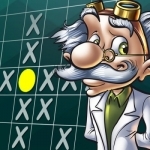
Logic Puzzles Daily
Games, Entertainment and Stickers
App
Logic Puzzle fans, meet your nemesis! Created by a team of puzzlers who have been completing these...
Hazel (1853 KP) rated Touching the Rock: An Experience of Blindness (Notes on Blindness Film Tie-in) in Books
May 23, 2017
It is not often a blind man writes a book, and “write” is a word used due to the lack of a better. John M. Hull gradually lost his sight, registering as blind in 1980, a couple of days before the birth of his son. Although anticipating the event, John struggled to come to terms with his new circumstances and adjust to a new way of living. From 1983 through to 1985, John recorded his thoughts on tape, in diary form, as a way to ascertain and understand his predicament. Originally titled Touching the Rock (1990), John’s book has been republished as Notes on Blindness after the release of the film of the same name.
Initially, John made recordings every day, dictating the everyday occurrences he encountered. Amazingly, despite his disability, John was able to continue as a university lecturer and delve deeper into the world of theology. The way John thinks things through as he speaks reflects his academic abilities. Although he may have despaired at the thoughts of not being able to see his children, he had a fairly positive outlook on life.
John’s thought capacity and religious ideology are evident in his assemblage of diary entries. As a blind person, he learns to see the world in an alternative way, and often feels closer to God as a result. Through these new experiences, John begins to see the light despite the darkness.
The metaphorical descriptions of blindness help the reader to understand the horror and difficulties not being able to see visually provokes. This is heightened by John’s recordings of the bad dreams he often suffers, in which he is able to see. His fixations on these dreams are assumedly a fascination with visual imagery, which he does not have access to in his waking life.
It is hard not feel sorry for John as he reports the conversations he has with his young children. The effort to communicate and play with them is far greater than a seeing parent. Remarkably, as John begins to adjust to his new lifestyle, his children take the situation in their stride.
Notes on Blindness is also an educational narrative for those without sight problems. John explains the things other people, in attempts to be helpful, do that result in making things far more confusing for John as he tries to navigate his way from one place to another. Despite what most think, blind people are fairly good at walking routes they are familiar with, and, with the help of a stick, can safely travel through new areas. Once people start shouting instructions, it is difficult to pay attention to the location and listen to everyone else at the same time.
John’s voice is extremely articulate, and his thoughts profound, which may suggest heavy editing when compiling the recordings into written form. However, as he is an academician, his eloquence of speech does not feel forced or faked.
Notes on Blindness remains the same as the original publication but with the added inclusion of an introduction by Cathy Rentzenbrink, and an epilogue by his wife Marilyn, written in 2016, a year after his death. These, the latter in particular, provide an insight into how John’s blindness affected those around him and emphasises what a truly remarkable man he was.
Of the many memoirs available on bookshelves today, Notes on Blindness is a truly unique publication. It is not telling a story, or recounting a well-lived life, but gives great insight into the world of the blind. As John’s thoughts were not originally recorded with intention of being available to everyone, they are all the more personal and honest, provoking emotion and providing the reader with a new way of seeing. It is a book that will stay with you for a very long time.
Fred (860 KP) rated Avengers: Endgame (2019) in Movies
Apr 25, 2019
Anyway, the movie starts with a scene that could have been (and should have been) the ending to Infinity War & it would have changed nothing of the "half the world is dead" cliffhanger we were left with. We would have also gotten a shorter final movie, which would be better off. At least we wouldn't have those ridiculous "when to pee" articles on the internet. Please. I've seen all the Lord of the Rings movies in the theater. Nobody talked pee breaks & those movies were far superior to the Marvel movies. So, after this fantastic beginning, we then get a long sequence of scenes where it seems to want to re-introduce the characters we've seen in 20 freaking films already. Let's catch-up, shall we? Yes, let's make a 3 hour movie to show us our heroes eating lunch. Are you kidding me? The film goes on too long here & it's all very unnecessary. We are finally told the heroes are going to do something about the situation & they start to figure out how to do it. So, here's a minor SPOILER here, so skip to the next paragraph if you don't want to see it. The heroes decide to get the Infinity stones. And here's where there's a problem for me. See in Infinity War, I felt Thanos got the stones too easily. In a half hour, he got all 6. Well, the heroes get them even quicker in this film. What could have been made into a separate movie, they have the stones in 20 minutes. Playing with time-travel, they could have spread out the nostalgic look back into the older films, like they did in this film, but they could have had a lot more fun or play with it like Back to the Future II did when Marty went back to 1955 again. I felt a missed opportunity.
Okay, no more spoilers. So after the heroes do this, they now have to ability to do what they want & then starts maybe the greatest piece of film I've ever seen. At least in any of the Marvel Cinematic Universe movies. It's incredible & a comic-book fan's sweet dream come true. There are really no surprises as to what is going to happen. You know who's showing up. You know when they're showing up & you know what the endgame is going to be. Again, I will not give anything away, but I'm pretty sure everyone knows someone or someones will not continue on. We know the rumors & you've heard the end will bring you to tears. So, after this scene, we are "treated" to about 15 minutes of a sad sequence. Boo Hoo. We say goodbye, but then something extraordinary. The final scene to the film is perfect. It fixes one of what I considered a great injustice in the MCU & ends the film with a "YES!" moment.
So, final verdict is I am giving the film a 7 out of 10. Don't believe the perfect 10 scores. It's not a 10. In fact, I feel that if I ever watch it again, I will probably watch the beginning, then skip to the end. Most of the film is filler to lead us to that phenomenal scene.
Hazel (1853 KP) rated Notes on Blindness: A Journey Through The Dark in Books
Dec 17, 2018
It is not often a blind man writes a book, and “write” is a word used due to the lack of a better. John M. Hull gradually lost his sight, registering as blind in 1980, a couple of days before the birth of his son. Although anticipating the event, John struggled to come to terms with his new circumstances and adjust to a new way of living. From 1983 through to 1985, John recorded his thoughts on tape, in diary form, as a way to ascertain and understand his predicament. Originally titled <I>Touching the Rock</I> (1990), John’s book has been republished as <I>Notes on Blindness</i> after the release of the film of the same name.
Initially, John made recordings every day, dictating the everyday occurrences he encountered. Amazingly, despite his disability, John was able to continue as a university lecturer and delve deeper into the world of theology. The way John thinks things through as he speaks reflects his academic abilities. Although he may have despaired at the thoughts of not being able to see his children, he had a fairly positive outlook on life.
John’s thought capacity and religious ideology are evident in his assemblage of diary entries. As a blind person, he learns to see the world in an alternative way, and often feels closer to God as a result. Through these new experiences, John begins to see the light despite the darkness.
The metaphorical descriptions of blindness help the reader to understand the horror and difficulties not being able to see visually provokes. This is heightened by John’s recordings of the bad dreams he often suffers, in which he is able to see. His fixations on these dreams are assumedly a fascination with visual imagery, which he does not have access to in his waking life.
It is hard not feel sorry for John as he reports the conversations he has with his young children. The effort to communicate and play with them is far greater than a seeing parent. Remarkably, as John begins to adjust to his new lifestyle, his children take the situation in their stride.
<i>Notes on Blindness</i> is also an educational narrative for those without sight problems. John explains the things other people, in attempts to be helpful, do that result in making things far more confusing for John as he tries to navigate his way from one place to another. Despite what most think, blind people are fairly good at walking routes they are familiar with, and, with the help of a stick, can safely travel through new areas. Once people start shouting instructions, it is difficult to pay attention to the location and listen to everyone else at the same time.
John’s voice is extremely articulate, and his thoughts profound, which may suggest heavy editing when compiling the recordings into written form. However, as he is an academician, his eloquence of speech does not feel forced or faked.
<i>Notes on Blindness</i> remains the same as the original publication but with the added inclusion of an introduction by Cathy Rentzenbrink, and an epilogue by his wife Marilyn, written in 2016, a year after his death. These, the latter in particular, provide an insight into how John’s blindness affected those around him and emphasises what a truly remarkable man he was.
Of the many memoirs available on bookshelves today,<i> Notes on Blindness</i> is a truly unique publication. It is not telling a story, or recounting a well-lived life, but gives great insight into the world of the blind. As John’s thoughts were not originally recorded with intention of being available to everyone, they are all the more personal and honest, provoking emotion and providing the reader with a new way of seeing. It is a book that will stay with you for a very long time.
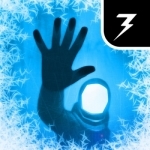
Lifeline: Silent Night
Games and Entertainment
App
The hearts and imaginations of countless players worldwide were captured when the original Lifeline...

Air Tycoon 2 HD
Games
App
Manage your own airline company in the world on your iPad. Go away just screen-stretched iPad games....
Charlie Cobra Reviews (1840 KP) rated Little Monsters (2019) in Movies
Jul 7, 2020 (Updated Oct 26, 2020)
Darren (1599 KP) rated The Haunting in Connecticut: 2 Ghosts of Georgia (2013) in Movies
Oct 14, 2019
Performances – This is a sequel with no returning cast members, no connection to the original, so the cast is brand new. We do have a couple of known actors from television, Abigail Spencer, Chad Michael Murray and Katee Sackhoff, they do what they can with the material, but the poor decisions they are forced to make doesn’t help. Emily Alyn Lind does well for a child star put in horror situation.
Story – The story is based on real events or sold on this idea anyway. We have the events of the story taking place over short amount of time, as we see how everything seems to escalate, which is fine for a horror story. the idea the sisters and daughter can see spirits naturally is a good spin on the idea where only one can usually see the ghosts. The problems do some into this too as the one person who can’t see the spirits still sees them and most of the decisions being made are poor throughout. For the mystery behind everything it does keep us interested throughout and does give us shocks along the way.
Horror/Mystery – When it comes to the horror in this film we get plenty of the normal jump scares, most of which just play out like you would imagine, the casual fan will jump along the way. The highlight is the mystery behind what is causing the hauntings because history is always filled with surprises.
Settings – The setting for the film is good because it is an old house that is bound to be filled with history that could be a terrifying as what we learn as the film unfolds.
Special Effects – The effects in this film are mixed because the way the flashbacks are shot does look do and feels different to current events, the negatives come from how the injuries can look while inflicted to the modern characters.
Scene of the Movie – Cut the cord.
That Moment That Annoyed Me – The moments Andy saw a ghost.
Final Thoughts – This is a solid enough sequel even though it has no connection to the actual first film, it does have smart ideas but terrible character decisions.
Overall: Horror fans should enjoy.

Titan (2020)
Tabletop Game
Titan is a network construction game set in the distant future, in which you play as employees of...
SpaceGames 2020Games
